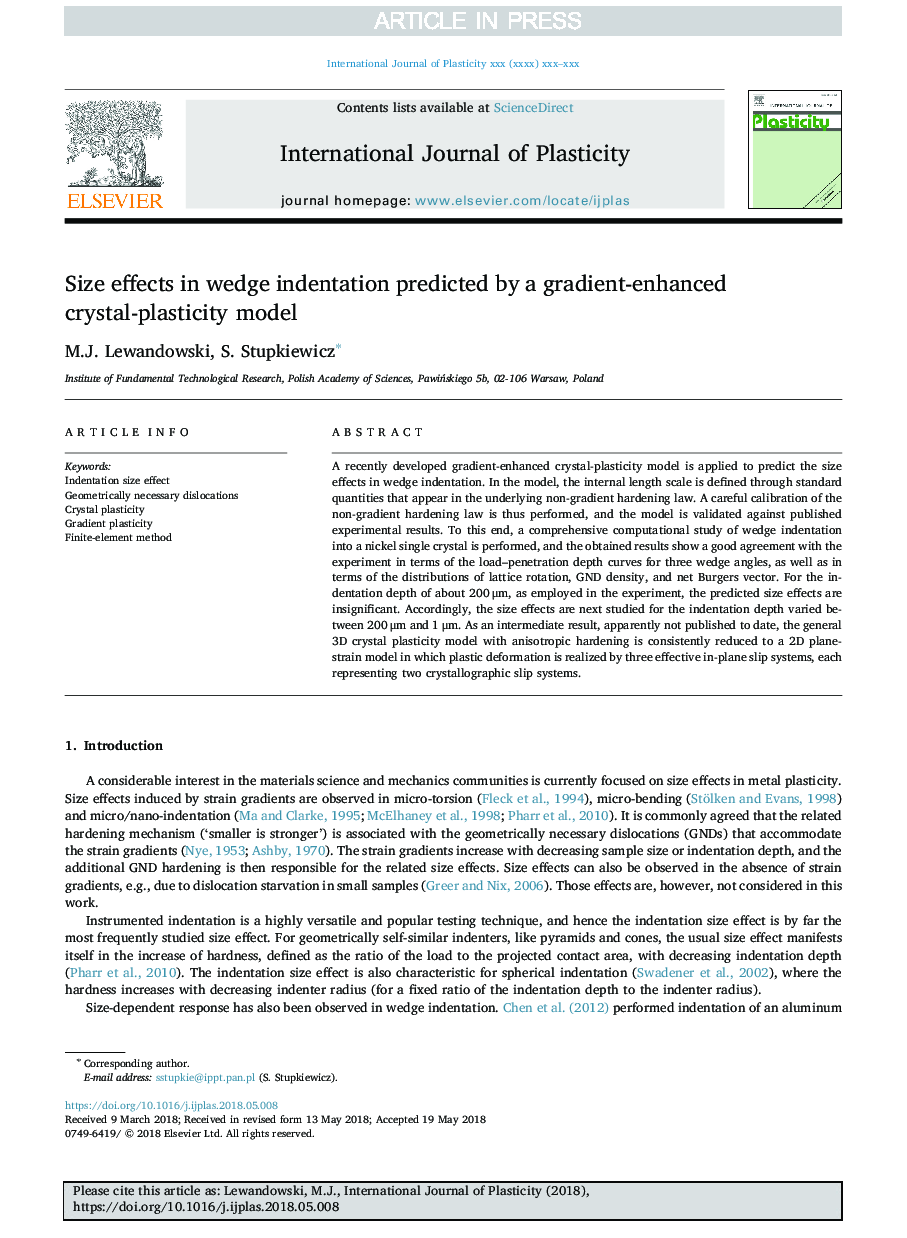| Article ID | Journal | Published Year | Pages | File Type |
|---|---|---|---|---|
| 8947695 | International Journal of Plasticity | 2018 | 25 Pages |
Abstract
A recently developed gradient-enhanced crystal-plasticity model is applied to predict the size effects in wedge indentation. In the model, the internal length scale is defined through standard quantities that appear in the underlying non-gradient hardening law. A careful calibration of the non-gradient hardening law is thus performed, and the model is validated against published experimental results. To this end, a comprehensive computational study of wedge indentation into a nickel single crystal is performed, and the obtained results show a good agreement with the experiment in terms of the load-penetration depth curves for three wedge angles, as well as in terms of the distributions of lattice rotation, GND density, and net Burgers vector. For the indentation depth of about 200â¯Î¼m, as employed in the experiment, the predicted size effects are insignificant. Accordingly, the size effects are next studied for the indentation depth varied between 200â¯Î¼m and 1â¯Î¼m. As an intermediate result, apparently not published to date, the general 3D crystal plasticity model with anisotropic hardening is consistently reduced to a 2D plane-strain model in which plastic deformation is realized by three effective in-plane slip systems, each representing two crystallographic slip systems.
Keywords
Related Topics
Physical Sciences and Engineering
Engineering
Mechanical Engineering
Authors
M.J. Lewandowski, S. Stupkiewicz,
